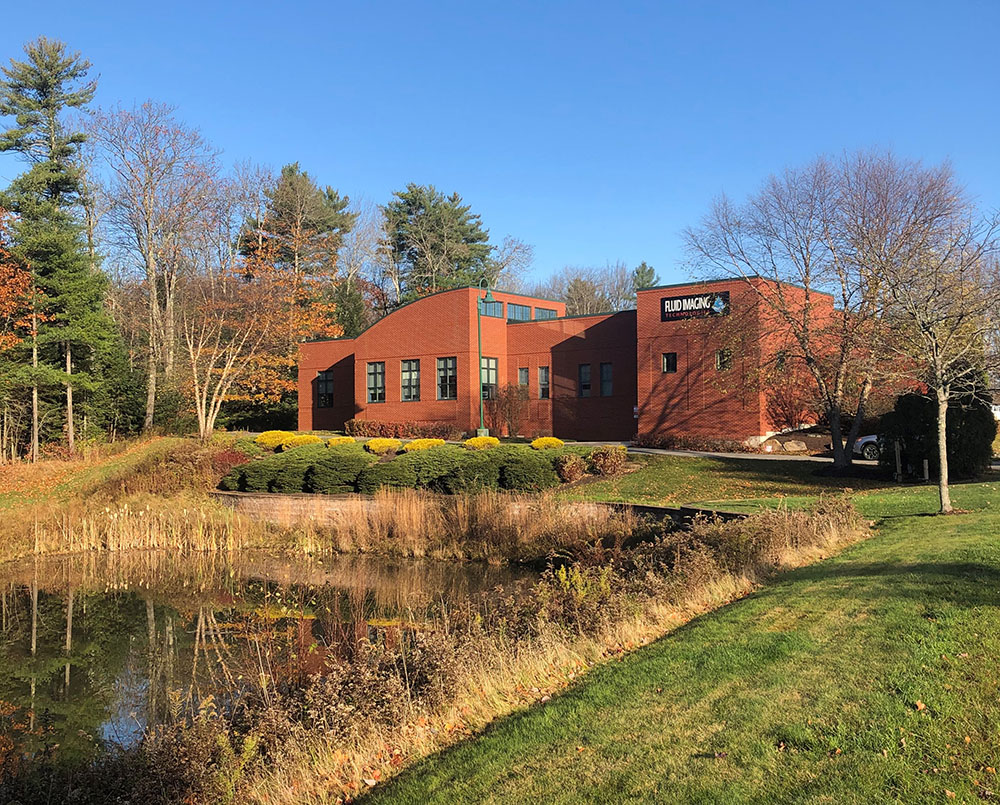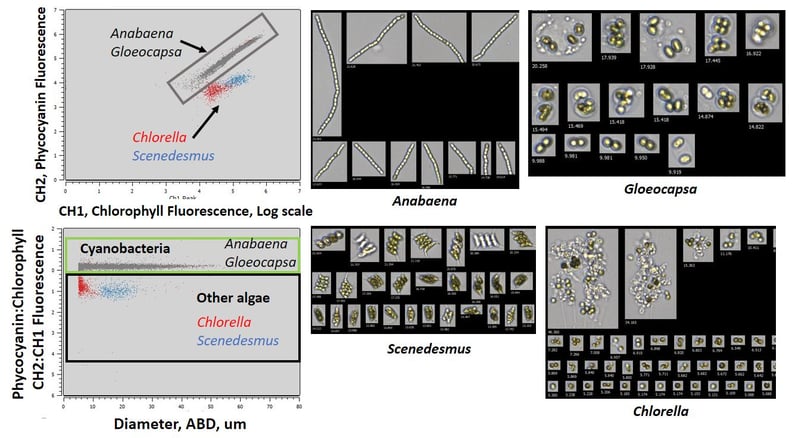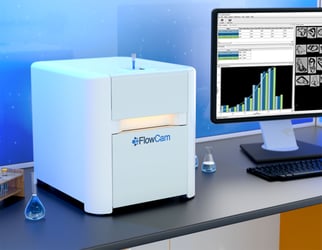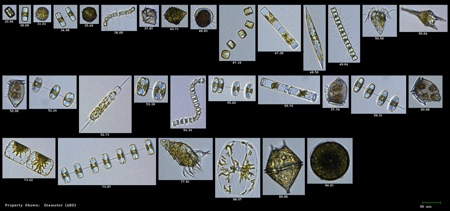Have you ever wondered how our technical customer support team performs quality control checks during services and before shipping new instruments? Here's one example of the process our team uses to check for accuracy on the FlowCam Cyano.
Pictured above: Enterprise Pond at YFT headquarters in Scarborough, Maine. The source of the sample used in this demonstration.
The FlowCam Cyano has 3 pre-built fluorescence filters that discriminate between nuisance cyanobacteria, detritus and decomposing algae, and diatoms and other algae based upon the different levels of inherent chlorophyll and phycocyanin autofluorescence. These pre-built filters can be adjusted using cultures of freshwater cyanobacteria (typically Gloeocapsa and Anabaena). Here we will demonstrate how we adjust these pre-built filters for either the 4x, 10x, or 20x objectives and the associated FOV flow cells, using either fluorescing beads or live samples instead of algae cultures. After the adjustment of the pre-built fluorescent filters, you will be able to use these filters to help you automatically discriminate between the different groups and obtain count and concentration for each group.
For this sample run, in the Fall of 2020, several sweeps with a 20µm plankton net were performed in a small freshwater pond. The sample was then filtered through 35µm Nitex mesh to concentrate the particles and resuspend them in the water. The sample was pre-filtered through a 70µm cell strainer prior to running on the FlowCam using 10X/FOV100 and 20X/FOV50. No pre-filter step was necessary in the 4X/FOV600.
All samples were run using trigger mode with a PPUI less than 1.2, and VisualSpreadsheet 5.4.7 was used for data acquisition and data analysis.
Pictured below are examples of fluorescent beads captured in trigger mode with different objectives and FOV flow cells. Unlike cultures or natural samples fluorescent beads should remain stable as long as they have not been exposed to light. This is an important tool to check for laser and PMT detector alignment on your FlowCam Cyano when cultures or live samples are not available. 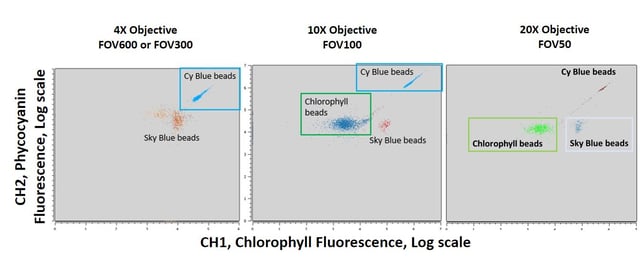
The next set of images shows the steps for modifying the pre-built fluorescent filters. The graph is initially used to visualize the different groups, then the selected group is delineated, and the corresponding images appear and are sorted by CH2/CH1 Ratio. The minimum and maximum values can then be viewed and recorded. These values are entered into the filter dialog window and the fluorescent filters are saved. (All images were collected with 20X, FOV50 and Diameter ABD. The µm are displayed underneath each image. Click to enlargen the image.)
This is just one part of a multi-step process to ensure our FlowCam Cyanos are performing their best before they are shipped to customers. The FlowCam Cyano user guide provides instructions in much greater detail on how to perform quality control checks on your instrument. Please send an email to customercare@fluidimaging.com with any questions.








